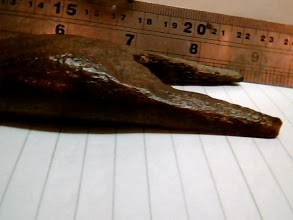I have recently stumbled across a not so obvious link between Ancient Cleveland in the North East of England and Cleveland Ohio in the United States. The two modern areas share many similarities including a history of heavy industry, steel works, chemicals, and mining, hard people living in a hard place and being proud of it, but I've discovered the relationship goes much deeper.
The image above shows the industry in Ancient Cleveland north east England, the image below shows the industry in Cleveland Ohio around the same period in history.
The image above features the Tees Newport bridge in British Cleveland, the image below shows the High Level bridge in Cleveland, Ohio.
General Moses Cleveland pictured above, a descendent of the Viking Thorkic, who was the father of Robert of Cleveland born in what is now a suburb of Middlesbrough, Ormesby Ancient Cleveland.
Whilst researching I found that Cleveland Ohio was founded and named by General Moses Cleveland. Research into his ancestry first took me through three generations of American born ancestors, and then to Ipswich on the South East coast of England. Further research eventually lead back to Ancient Cleveland, and a Viking named Thorkic, farther of Robert of Cleveland, who was born in the Viking settlement of Ormesby, which is now the name of a suburb of Middlesbrough in the Viking named area Cleveland.
The image above shows a statue less than a mile away from the probable birth place of Robert son of Thorkic, the ancestors of General Moses Cleveland the man who gave Cleveland Ohio its name.
So there is no doubt that the ancient area of Cleveland in North east England gave its name to Cleveland Ohio via General Moses Cleveland .
AND A PRESIDENT WHO WAS RELATED
President Grover's ancestors also emigrated from ancient Cleveland in 1635 and were related to General Moses Cleveland .



















































